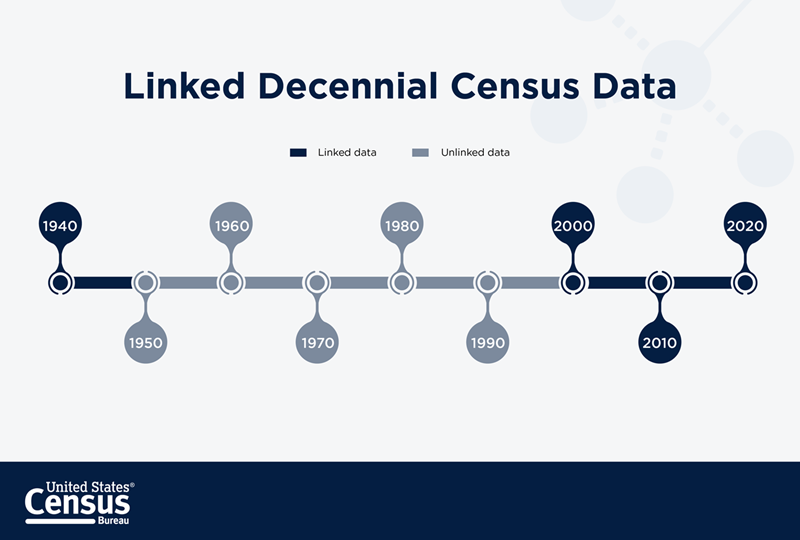
An official website of the United States government
Here’s how you know
Official websites use .gov
A .gov website belongs to an official government organization in the United States.
Secure .gov websites use HTTPS
A lock (
) or https:// means you’ve safely connected to the .gov website. Share sensitive information only on official, secure websites.
-
//
- Census.gov /
- Our Surveys & Programs /
- Decennial Census Digitization and Linkage (DCDL) Project
Decennial Census Digitization and Linkage (DCDL) Project
Decennial Census Digitization and Linkage (DCDL) Project
The Decennial Census Digitization and Linkage (DCDL) project will produce linked restricted microdata files from the decennial censuses of 1960 through 1990. The data resulting from the DCDL project will revolutionize our understanding of human behavior and life in the United States, providing transformational opportunities for research, education, and evidence-building across the social sciences. These data will allow for many ground-breaking research topics, including the American Opportunity Study.
This project is the final component of creating a longitudinal dataset that covers most of the U.S. population since 1940, as records from 1940, 2000, 2010, and 2020 have already been linked. Microdata files for 1960-1990 are available for research but do not include identifiers or linkage keys. However, the Census Bureau has images from the 1960-1990 Census forms stored on microfilm. This project will digitally capture the images from microfilm, use handwriting recognition to recover respondent names, link the recovered names to the original microdata records, and assign respondents anonymous linkage keys, called Protected Identification Keys (PIKs).

With the anonymous linkage keys assigned, the 1960-1990 Census data will become part of the Census Bureau’s Data Linkage Infrastructure. The 1950 Census images records were released publicly by the National Archives and Records Administration in April 2022. We plan to include the resulting microdata in the Data Linkage Infrastructure in the future.
Like all data with PIKs assigned to respondents within the Data Linkage Infrastructure, the resulting data will be linked anonymously at the individual level to other data, including recent decennial census data, Census Bureau surveys, commercial data, and administrative data. These data are all available to researchers on approved projects through the Federal Statistical Research Data Centers (FSRDCs).
Methodology
- Scan microfilm reels with images from the 1960-1990 Censuses and create digital images
- Use Optical Character Recognition and Optical Mark Recognition on the digital images to capture the names and additional information.
- Link newly digitized information to previously digitized data.
- Assign Protected Identification Keys (PIKs) to the records to facilitate anonymous linkage to data in the Census Bureau’s Data Linkage Infrastructure
- Remove Personally Identifying Information (PII) and release data with PIKs for research purposes to FSRDCs.
Collaborators
The project has been a collaborative effort between the Census Bureau, University of Michigan (ICPSR), University of Southern California (Information Sciences Institute), Brown University, and Harvard University (Opportunity Insights).
Related Information
 Yes
Yes
 No
NoComments or suggestions?


Top
